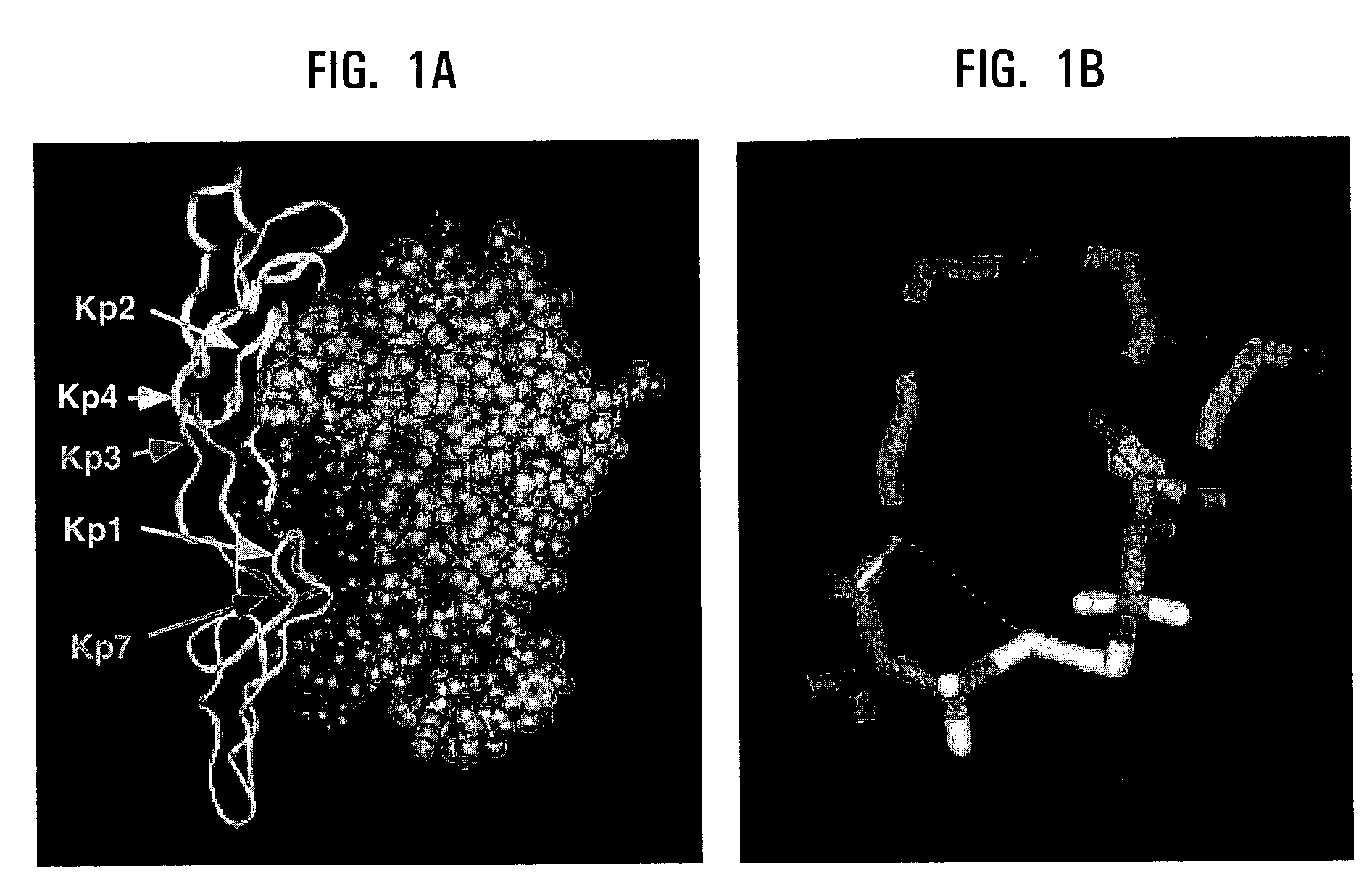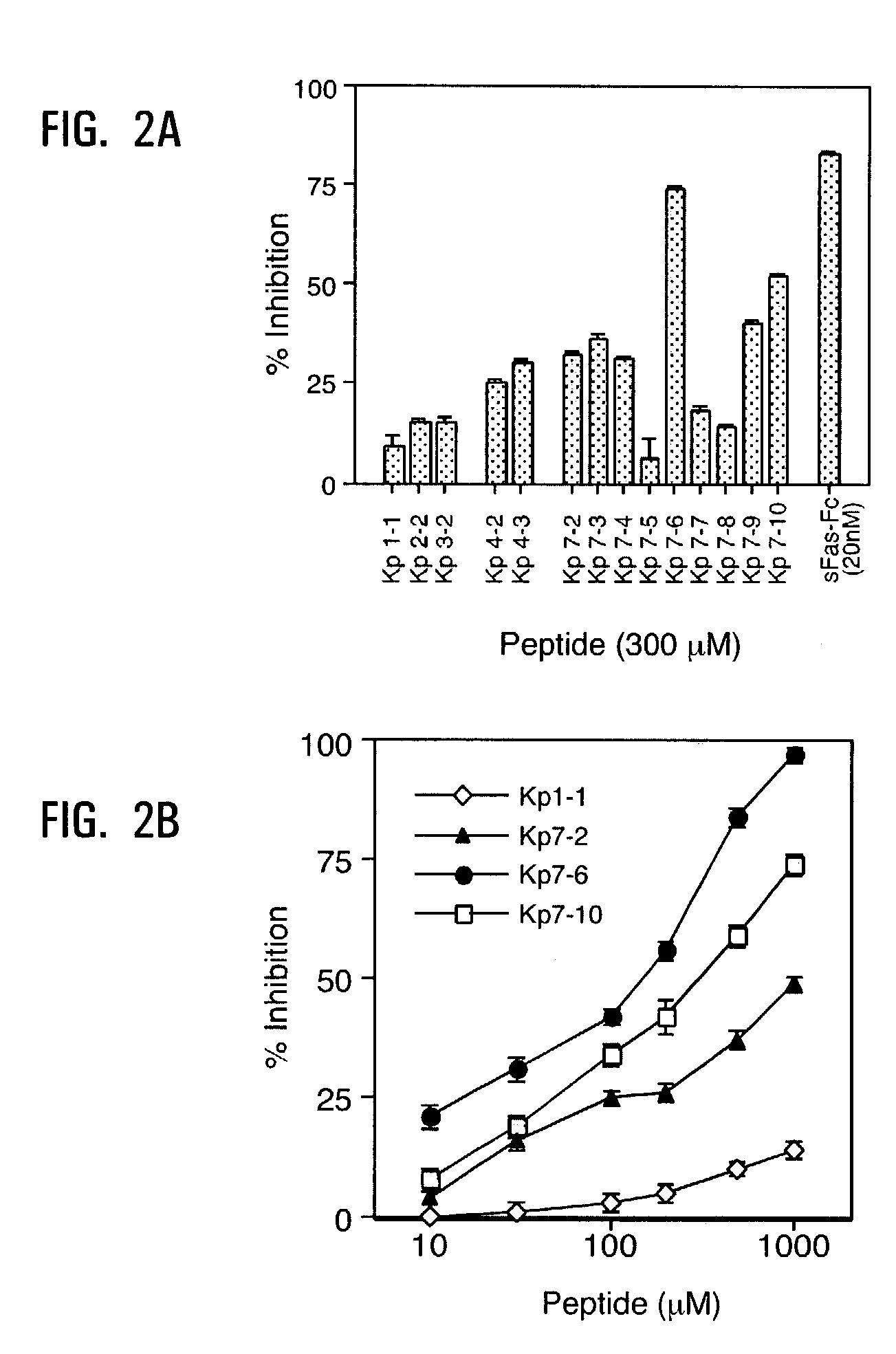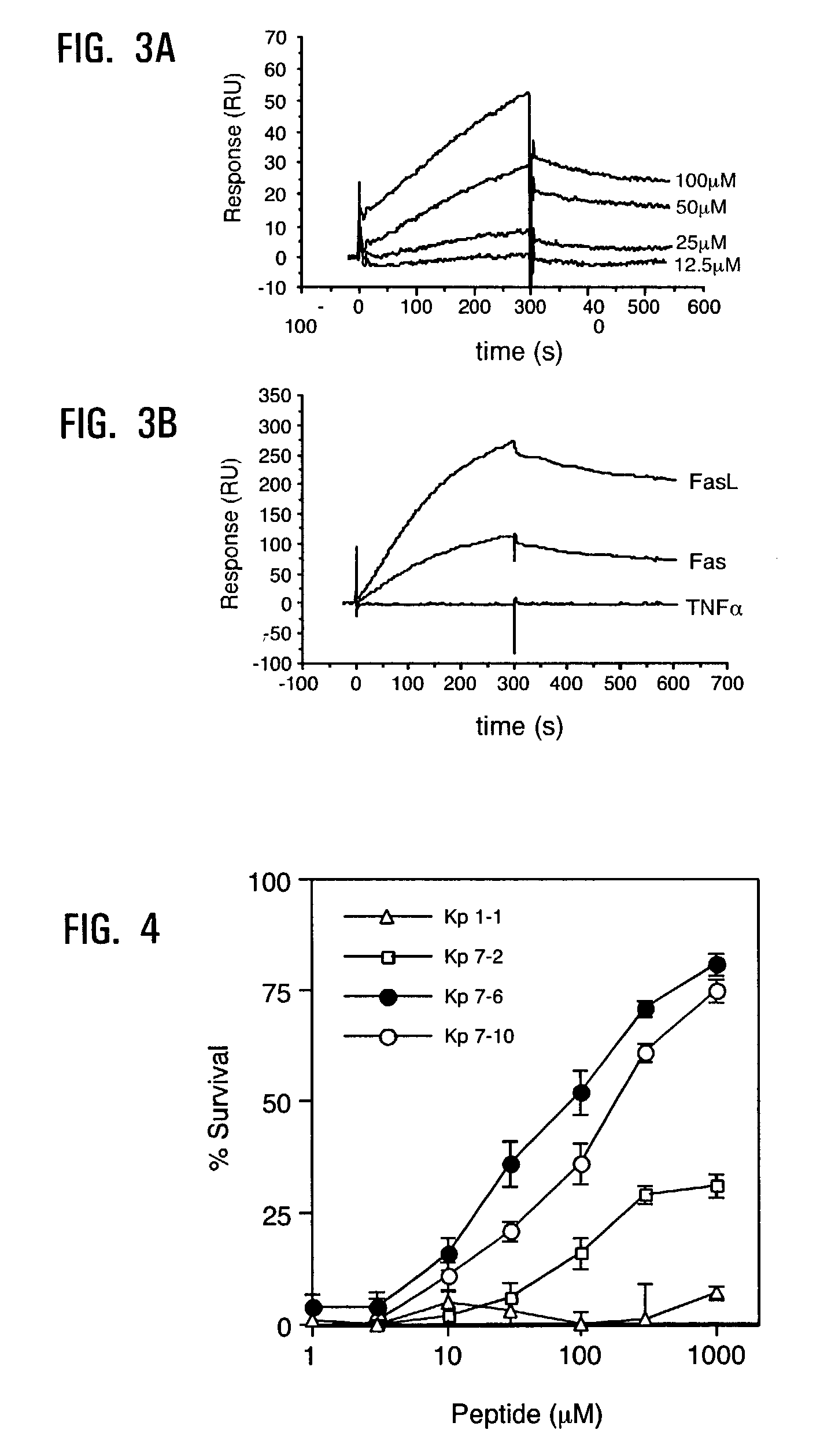Fas peptide mimetics and uses thereof
a technology of peptides and mimetics, applied in the field of therapeutic agents, can solve the problems of lymphocyte apoptosis, long half life, lymphoproliferation and autoimmunity, etc., and achieve the effect of accurately determining the useful dose in humans, prolonging the survival of patients, and reducing the risk of side effects
- Summary
- Abstract
- Description
- Claims
- Application Information
AI Technical Summary
Benefits of technology
Problems solved by technology
Method used
Image
Examples
example 1
Molecular Model of a Fas Receptor Complex
[0152]Fas, a member of TNF superfamily, shares significant structural homology with the TNF receptor. The structure of the TNF receptor contains distinct “cystine-knot” repeating domains. (Naismith, J. H. et al. Structure 4, 1251-1262 (1996)). Loop structures in the first three domains as well as β-turns in proteins are considered to mediate roles in molecular recognition and binding. (Leszczynski, J. F. et al. Science 234, 849-855 (1986)). To develop a cystine-knot peptide mimetic, sites of protein-protein interaction that might be disrupted or influenced by small molecules were identified.
[0153]A molecular model of the Fas and FasL complex (FIG. 1a) was developed using the crystal structure of TNF receptor complex in our methodology as well as other already published models. (Watanabe-Fukunaga et al. supra; Naismith, J. H. et al. J Biol Chem 270, 13303-13307 (1995); Banner, D. W. et al. Cell 73, 431-445 (1993); Bajorath, J. J Comput Aided M...
example 2
Inhibition of FasL Binding to Fas Receptor
[0157]Fas mimetic activity was evaluated in an assay that measured FasL-Flag binding (100 ng / ml) to Fas-Fc fusion protein immobilized onto plastic plates. The first generation mimetics Kp1-1,2-2, 3-2,4-2 and 7-2 were designed from different deduced binding sites of Fas to FasL and screened using a binding inhibition assay comprising 300 μM of peptide and 20 nM of soluble Fas receptor (FIG. 2A). The results indicated that Kp7 loop is a preferred surface for the design of mimetics as a template. Additional generations of exocyclic peptides derived from the Kp7 loop surface were also engineered. By the analysis of the interaction site between FasL and Fas, and biological activity of different mimetics, the aspartic and glutamic acids in Kp7 loop appear to represent the most relevant residues involved in the interaction. However, the particular acidic amino acid at each position is not critical. Hence, for example, either an aspartic acid or a g...
example 3
Binding Affinity and Specificity of Kp7 Mimetics
[0159]The kinetics of binding of Kp7-6, which mediated the best inhibitory activity to FasL, was performed using surface plasmon resonance (BIAcore™) analysis. FasL-Flag was immobilized onto a sensor chip and various solutions containing different concentrations of Kp7-6 were passed over the surface. FIG. 3A shows the sensogram result obtained with these different Kp7-6 concentrations. The kon and koff rate constants were estimated to be 6.85×101 M−1 s−1 and 7.65×10−4 s−1, respectively, and a KD of value of 1.12×10−5 M was obtained from the ratio of the dissociation / association rate constants. The koff value is considered as an important indicator in the development of therapeutics with biological activity (Benveniste, M. et al. Br J Pharmacol 104, 207-221 (1991); Yiallouros, I. et al. Biochem J 331, 375-379 (1998)), and generally correlates with potent biological effects. (Moosmayer, D. et al. J Interferon Cytokine Res 16, 471-477 (19...
PUM
| Property | Measurement | Unit |
|---|---|---|
| dielectric constant | aaaaa | aaaaa |
| pH | aaaaa | aaaaa |
| pH | aaaaa | aaaaa |
Abstract
Description
Claims
Application Information
 Login to View More
Login to View More - R&D
- Intellectual Property
- Life Sciences
- Materials
- Tech Scout
- Unparalleled Data Quality
- Higher Quality Content
- 60% Fewer Hallucinations
Browse by: Latest US Patents, China's latest patents, Technical Efficacy Thesaurus, Application Domain, Technology Topic, Popular Technical Reports.
© 2025 PatSnap. All rights reserved.Legal|Privacy policy|Modern Slavery Act Transparency Statement|Sitemap|About US| Contact US: help@patsnap.com



